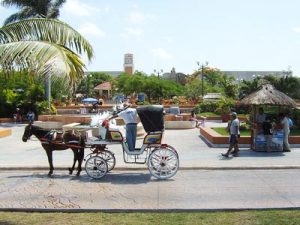
UnCruise Adventures, a leading provider of small ship adventure cruises in Baja California, Mexico, has announced the launch of bookings for a special one-time sailing of the Baja California Eclipse Cruise. Departing on April 6th, 2024, this 7-night adventure cruise offers the perfect opportunity for guests to witness the natural wonder of a total solar eclipse while exploring the beautiful waters of Baja, California, Mexico. With only 66 cabins available, the cruise is set to depart from the coast of Mazatlán and offers guests the opportunity to experience the unique combination of comfort and adventure.
This meticulously planned eclipse sailing includes not only the total solar eclipse but also an array of other activities such as steep red bluffs, sun-kissed private beaches, marine life encounters and sea lion snorkels, among others. The cruise also offers guests the opportunity to discover the rich history and culture of Baja California Sur, from the early explorers of John Steinbeck to the modern-day conservation efforts that preserve the natural beauty of the region.
“I highly recommend the Eclipse Cruise for anyone looking for a truly unique and adventurous experience. Our Belize 2023 Eclipse Cruise sold out quickly and we expect the same for the 2024 Baja Eclipse Cruise,” said Captain Dan Blanchard, CEO of UnCruise Adventures. “I’m incredibly proud to be a part of the Baja California Sur community and support local tourism and growth. This is what makes over 25 years in this industry worth it.”
The cruise includes several highlights such as ease of flights with roundtrip entry and departure into San Jose del Cabo with safe tourism guidelines, expert positioning for optimal viewing of the celestial event, daily activities to get up close and personal with the region’s marine life, comfortable accommodations, gourmet meals and a friendly crew. Current WAVE season offers are also valid for the 2024 Baja California Eclipse Cruise bookings.
For more information or to make a reservation, guests can contact UnCruise Adventures at sales@uncruise.com, 888-862-8881 or ask their travel advisor for more details.
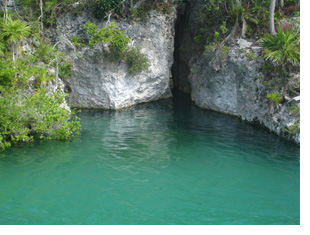 Several hours later, while still completely ensconced within this underwater domain, time has ceased to exist. Only the shriveling of the skin on my fingers and lunchtime hunger pangs tempt me to slowly retreat back to land. The vivid colors of the world beneath will again come alive in my dreams later that evening, along with several evenings to come.
Several hours later, while still completely ensconced within this underwater domain, time has ceased to exist. Only the shriveling of the skin on my fingers and lunchtime hunger pangs tempt me to slowly retreat back to land. The vivid colors of the world beneath will again come alive in my dreams later that evening, along with several evenings to come.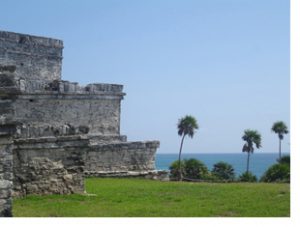
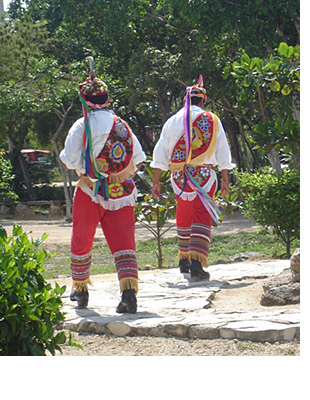 Entering the grounds through a breach in its western wall, well-preserved ancient Mayan palaces, pristine foliage inspired gardens, intricate rockwork walls and sheer cliffs are all deemed impressive.
Entering the grounds through a breach in its western wall, well-preserved ancient Mayan palaces, pristine foliage inspired gardens, intricate rockwork walls and sheer cliffs are all deemed impressive.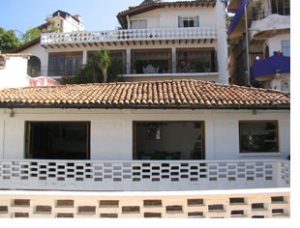
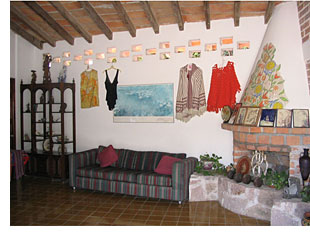 Taylor’s clothes still hang on pegs in a room adjoining the kitchen. And everywhere there are photographs—a random moment caught on camera, as Burton solicitously lights Liz’s cigarette, another of the two of them gazing at one another, silhouetted in a balcony doorway overlooking the town—he cradling a drink, she seductively barefooted, and wearing the briefest of briefs.
Taylor’s clothes still hang on pegs in a room adjoining the kitchen. And everywhere there are photographs—a random moment caught on camera, as Burton solicitously lights Liz’s cigarette, another of the two of them gazing at one another, silhouetted in a balcony doorway overlooking the town—he cradling a drink, she seductively barefooted, and wearing the briefest of briefs. Burton, however, did return to Puerto Vallarta, this time with his third wife, Susan Hunt. Their villa, Casa Bursus, (a combination of their names) bought by Burton as a Valentine’s Day gift to his bride, is just a short walk around the corner from Casa Kimberley. Today it is part of Hacienda San Angel, an exquisite colonial style boutique villa.
Burton, however, did return to Puerto Vallarta, this time with his third wife, Susan Hunt. Their villa, Casa Bursus, (a combination of their names) bought by Burton as a Valentine’s Day gift to his bride, is just a short walk around the corner from Casa Kimberley. Today it is part of Hacienda San Angel, an exquisite colonial style boutique villa.










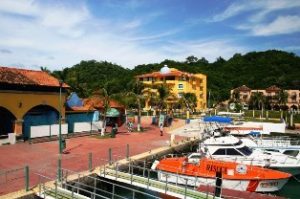 The van bumped and cajoled its way up into the Sierra Madre del Sur mountains, kicking pebbles into the jungle precipice from the dirt track and lurching to a standstill every so often for us to view the local wildlife: a tarantula the size of Boris Karloff’s hand, an armadillo waddling out of our way, and a rattler warming its length in the Mexican sun.
The van bumped and cajoled its way up into the Sierra Madre del Sur mountains, kicking pebbles into the jungle precipice from the dirt track and lurching to a standstill every so often for us to view the local wildlife: a tarantula the size of Boris Karloff’s hand, an armadillo waddling out of our way, and a rattler warming its length in the Mexican sun.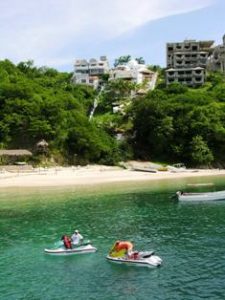 While the resort area comprises facilities for two cruise ships, and several major hotels, most are so underutilized it feels as if the parade has passed them by. In reality the parade has yet to come. The exception is Quinta Real Huatulco. Small, personal and beautifully laid out, the hotel stands atop a hill and offers spectacular views from multi-level patios for sun bathing, fresco dining and simply relaxing. Each of the spacious 28 suites is intimately private, some even have private pools, and all have shaded patios with double-sized hammocks.
While the resort area comprises facilities for two cruise ships, and several major hotels, most are so underutilized it feels as if the parade has passed them by. In reality the parade has yet to come. The exception is Quinta Real Huatulco. Small, personal and beautifully laid out, the hotel stands atop a hill and offers spectacular views from multi-level patios for sun bathing, fresco dining and simply relaxing. Each of the spacious 28 suites is intimately private, some even have private pools, and all have shaded patios with double-sized hammocks.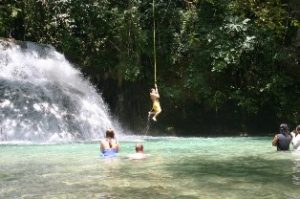 The name Huatulco comes from the Hahuatl word cuauhtolco, meaning “the place where the wood is adored.” According to legend, the great civilizing god Quetzalcoatl left the inhabitants of the bay of Santa Cruz a wooden cross. Another legend talks of an old, white man with long hair and a beard arriving from the sea. He carried a beautiful timber, like a cross, and stayed to teach them many things; when he departed, left them the holy timber.
The name Huatulco comes from the Hahuatl word cuauhtolco, meaning “the place where the wood is adored.” According to legend, the great civilizing god Quetzalcoatl left the inhabitants of the bay of Santa Cruz a wooden cross. Another legend talks of an old, white man with long hair and a beard arriving from the sea. He carried a beautiful timber, like a cross, and stayed to teach them many things; when he departed, left them the holy timber.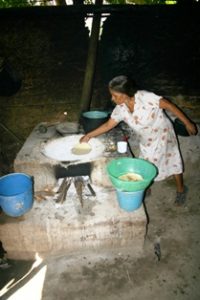 Most visitors do not come to Huatulco for the shopping. They come for the hospitality of ‘old style’ Mexico, for the safety (honest — this community is about as far removed from Mexico City as you can get), and to experience the country’s new style of eco-tourism: birding, diving, golf, mountain climbing, or shooting the whitewater rapids of the Rio Capalito where three different rafting trips are offered based a visitor’s skill level and fear factor. Or you can take an ATV, horse or hardy four-wheeler into the Sierra Madre del Sur mountains in search of their “green gold” ……pluma coffee.
Most visitors do not come to Huatulco for the shopping. They come for the hospitality of ‘old style’ Mexico, for the safety (honest — this community is about as far removed from Mexico City as you can get), and to experience the country’s new style of eco-tourism: birding, diving, golf, mountain climbing, or shooting the whitewater rapids of the Rio Capalito where three different rafting trips are offered based a visitor’s skill level and fear factor. Or you can take an ATV, horse or hardy four-wheeler into the Sierra Madre del Sur mountains in search of their “green gold” ……pluma coffee.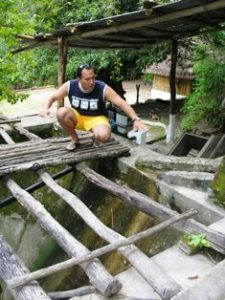 This was where our van was heading. After an hour of driving, we reached a remote village dating back some 400 years. Another hour of travel and some magnificent waterfalls at the head of the Rio Copilato were a welcome respite to the hot journey. Finally, we arrived at the Lagloria coffee plantation, a ramshackle group of adobe buildings and rather crude processing barrows and slatted drying racks surrounded by 550 acres of tangled bush. At 2000m above sea level, the ecological coffee has acquired a mythical status for its one-of-a-kind high altitude taste – smooth like chocolate yet dark, full bodied and without a hint of bitterness. Harvesting the beans is gruelling work earning pickers –primarily women for their smaller, nimbler hands, US$4 per 12-hour day. And even though the coffee plants grow wild amidst thorny bushes and jungle undergrowth where multi-colored tarantulas and deadly Naouyaka snakes make their home, danger money isn’t even a consideration.
This was where our van was heading. After an hour of driving, we reached a remote village dating back some 400 years. Another hour of travel and some magnificent waterfalls at the head of the Rio Copilato were a welcome respite to the hot journey. Finally, we arrived at the Lagloria coffee plantation, a ramshackle group of adobe buildings and rather crude processing barrows and slatted drying racks surrounded by 550 acres of tangled bush. At 2000m above sea level, the ecological coffee has acquired a mythical status for its one-of-a-kind high altitude taste – smooth like chocolate yet dark, full bodied and without a hint of bitterness. Harvesting the beans is gruelling work earning pickers –primarily women for their smaller, nimbler hands, US$4 per 12-hour day. And even though the coffee plants grow wild amidst thorny bushes and jungle undergrowth where multi-colored tarantulas and deadly Naouyaka snakes make their home, danger money isn’t even a consideration.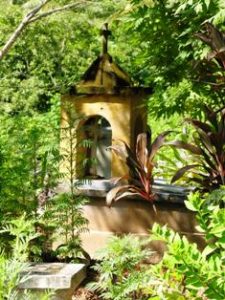 However, if you are looking for an alternate pace to this ecological paradise, you won’t be disappointed. The inevitable tequila tour boats can be found. They travel the coastline, music blaring, past nine mesmerizing bays, 36 lovely sandy beaches, most of which are inaccessible by land, to crystal clear snorkelling waters. The entire experience seems to fly in the face of the eco-message Huatalco is trying to promote. And while eco-tourism here is barely on the map, it holds the promise to be its salvation. So you might want to make tracks to this sleepy and beautiful part of Mexico before the pleasures of these party boats start to make their mark.
However, if you are looking for an alternate pace to this ecological paradise, you won’t be disappointed. The inevitable tequila tour boats can be found. They travel the coastline, music blaring, past nine mesmerizing bays, 36 lovely sandy beaches, most of which are inaccessible by land, to crystal clear snorkelling waters. The entire experience seems to fly in the face of the eco-message Huatalco is trying to promote. And while eco-tourism here is barely on the map, it holds the promise to be its salvation. So you might want to make tracks to this sleepy and beautiful part of Mexico before the pleasures of these party boats start to make their mark.
